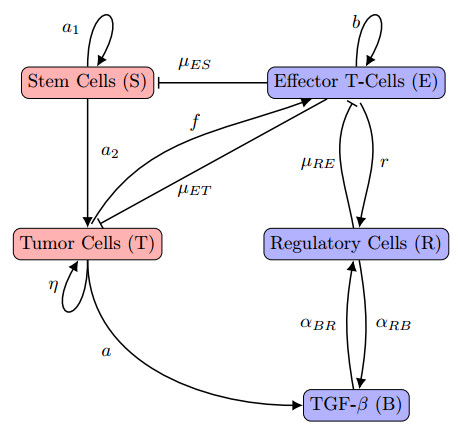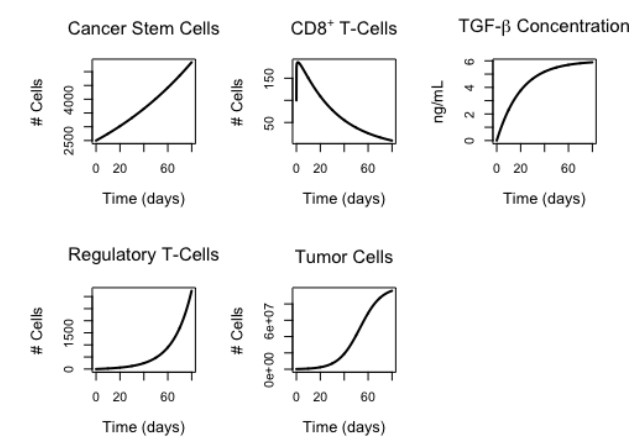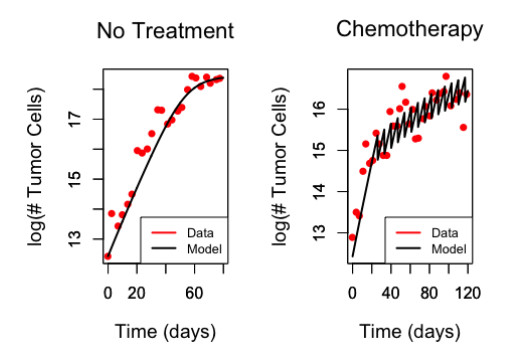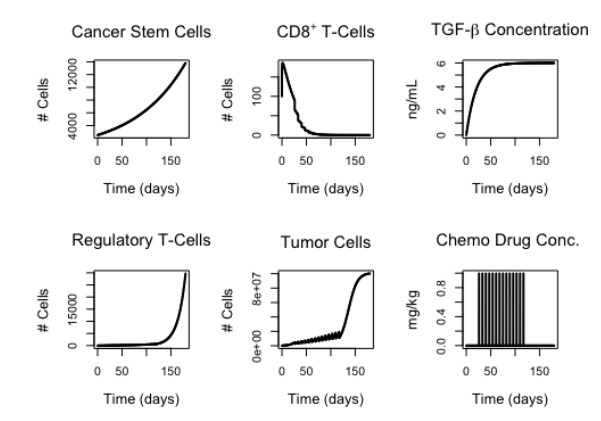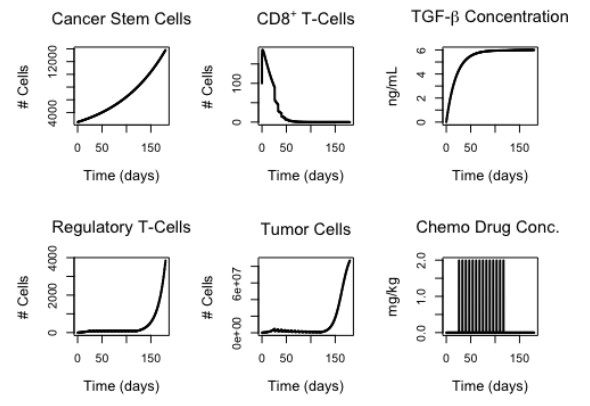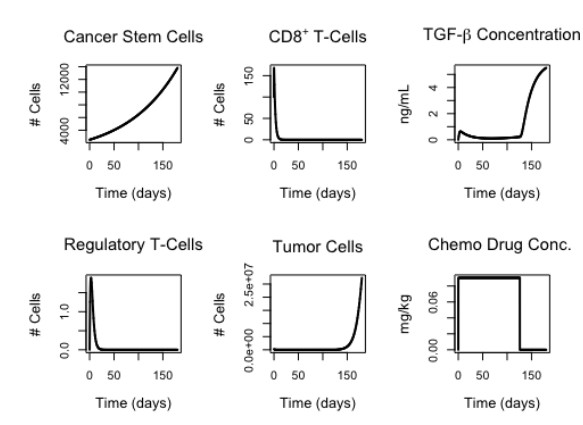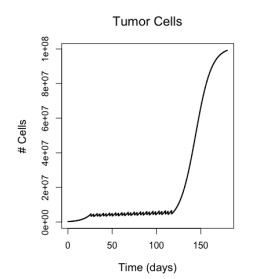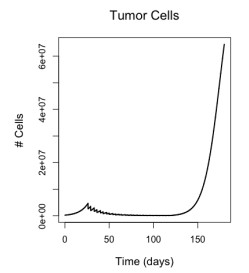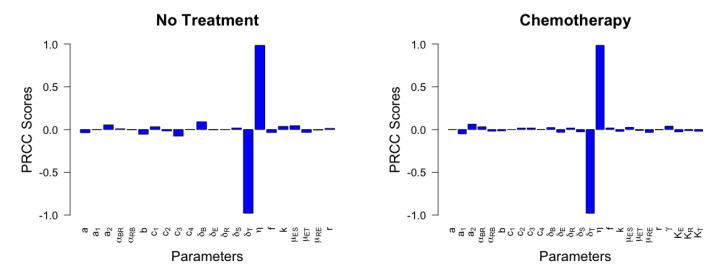|
[1]
|
T. Reya, S. J. Morrison, M. F. Clark, et al., Stem cells, cancer, and cancer stem cells, Nature, 414 (2001), 105–111.
|
|
[2]
|
M. Al-Hajj, M. S. Wicha, A. Benito-Hernandez, et al., Prospective identification of tumorigenic breast cancer cells, Proc. Nat. Acad. Sci., 100 (2003), 3983–3988.
|
|
[3]
|
T. Kondo, T. Setoguchi and T. Taga, Persistence of a small subpopulation of cancer stem-like cells in the C6 glioma cell line, Proc. Nat. Acad. Sci., 101 (2004), 781–786.
|
|
[4]
|
A. Cozzio, E. Passegué, P.M. Ayton, et al., Similar MLL-associated leukemias arising from self-renewing stem cells and short-lived myeloid progenitors, Gene Dev., 17 (2003), 3029–3035.
|
|
[5]
|
S. K. Singh, I. D. Clarke, T. Hide, et al., Cancer stem cells in nervous system tumors, Oncogene, 23 (2004), 7267.
|
|
[6]
|
X. Yuan, J. Curtin, Y. Xiong, et al., Isolation of cancer stem cells from adult glioblastoma multi-forme, Oncogene, 23 (2004), 9392.
|
|
[7]
|
A. T. Collins, P. A. Berry, C. Hyde, et al., Prospective identification of tumorigenic prostate cancer stem cells, Cancer Res., 65 (2005), 10946–10951.
|
|
[8]
|
, N. Haraguchi, H. Inoue, F. Tanaka, et al., Cancer stem cells in human gastrointestinal cancers, Human Cell, 19 (2006), 24–29.
|
|
[9]
|
C. Li, D. G. Heidt, P. Dalerba, et al., Identification of pancreatic cancer stem cells, Cancer Res., 67 (2007), 1030–1037.
|
|
[10]
|
I. Zucchi, S. Sanzone, S. Astigiano, et al., The properties of a mammary gland cancer stem cell, P. Natl. A. Sci., 104 (2007), 10476–10481.
|
|
[11]
|
S. Ma, K. Chan, L. Hu, et al., Identification and characterization of tumorigenic liver cancer stem/progenitor cells, Gastroenterology, 132 (2007), 2542–2556.
|
|
[12]
|
A. Kreso and J. Dick, Evolution of the cancer stem cell model, Cell Stem Cell, 14 (2014), 275–291.
|
|
[13]
|
, K. Dzobo, D. A. Senthebane, A. Rowe, et al., Cancer stem cell hypothesis for therapeutic inno-vation in clinical oncology? Taking the root Out, not chopping the leaf, OMICS A J. Integ. Bio., 20 (2016), 681–691.
|
|
[14]
|
A. L. Allan, S. A. Vantyghem, A. B. Tuck, et al., Tumor dormancy and cancer stem cells: impli-cations for the biology and treatment of breast cancer metastasis, Breast Dis., 26 (2006), 87–98.
|
|
[15]
|
D. Beier, P. Hau, M. Proescholdt, et al., CD133+ and CD133- glioblastoma-derived cancer stem cells show differential growth characteristics and molecular profiles, Cancer Res., 67 (2007), 4010–4015.
|
|
[16]
|
, H. Lopez-Bertoni, Y. Li and J. Laterra, Cancer stem cells: dynamic entities in an ever-evolving paradigm, Bio. Med., 7 (2015), 1–10.
|
|
[17]
|
P. Wang, W. Wan, S. Xiong, et al., Cancer stem-like cells can be induced through dedifferentia-tion under hypoxic conditions in glioma, hepatoma and lung cancer, Cell Death Discov., 3 (2017), 16105.
|
|
[18]
|
Y. Xu, C. So, H. Lam, et al., Apoptosis reversal promotes cancer stem cell-like cell formation, Neoplasia, 20 (2018), 295–303.
|
|
[19]
|
P. Grandics, The cancer stem cell: Evidence for its origin as an injured autoreactive T Cell, Molec. Cancer, 5 (2006), 1–6.
|
|
[20]
|
H. Lou and M. Dean, Targeted therapy for cancer stem cells: the patched pathway and ABC transporters, Oncogene, 26 (2007), 1357.
|
|
[21]
|
J. N. Rich, Cancer stem cells in radiation resistance, Cancer Res., 67 (2007), 8980–8984.
|
|
[22]
|
N. V. Margaryan, H. Hazard-Jenkins, M. A. Salkeni, et al., The stem cell phenotype of aggressive breast cancer cells, Cancers, 11 (2019), 340.
|
|
[23]
|
S. Pece, D. Disalvatore, D. Tosoni, et al., Identification and clinical validation of a multigene assay that interrogates the biology of cancer stem cells and predicts metastasis in breast cancer: A retrospective consecutive study, EBioMedicine, (2019), In press.
|
|
[24]
|
G. L. Gravina, A. Mancini, A. Colapietro, et al., The small molecule ephrin receptor inhibitor, GLPG1790, reduces renewal capabilities of cancer stem cells, showing anti-tumour efficacy on preclinical glioblastoma models, Cancers, 11 (2019), 359.
|
|
[25]
|
B. Bao, Z. Wang, S. Ali, et al., Metformin inhibits cell proliferation, migration and invasion by attenuating CSC function mediated by deregulating miRNAs in pancreatic cancer cells, Cancer Prevent. Res., 5 (2012), 355–364.
|
|
[26]
|
L. MacDonagh, M. F. Gallagher, B. French, et al., Targeting the cancer stem cell marker, alde-hyde dehydrogenase 1, to circumvent cisplatin resistance in NSCLC, Oncotarget, 8 (2017), 72544–72563.
|
|
[27]
|
J. J. Huang and G. C. Blobe, Dichotomous roles of TGF-β in human cancer, Biochem. Soc. Trans., 44 (2016), 1441–1454.
|
|
[28]
|
A. Dahmani and J. Delisle, TGF-β in T cell biology: Implications for cancer immunotherapy, Cancers, 10 (2018), 194.
|
|
[29]
|
D. A. Thomas and J. Massague, TGF-β directly targets cytotoxic T cell functions during tumor evasion of immune surveillance, Cancer Cell, 8 (2005), 369–380.
|
|
[30]
|
S. Mariathasan, S. J. Turley, D. Nickles, et al., TGF-β attenuates tumour response to PD-L1 block-ade by contributing to exclusion of T cells, Nature, 554 (2018), 544.
|
|
[31]
|
V. Ingangi, M. Minopoli, C. Ragone, et al., Role of microenvironment on the fate of disseminating cancer stem cells, Front. Onc., 9 (2019), 82.
|
|
[32]
|
F. Mami-Chouaib, C. Blanc, S. Corgnac, et al., Resident memory T cells, critical components in tumor immunology, J. Immunother. Cancer , 6 (2018), 87.
|
|
[33]
|
P. C. Rosato, S. Wijeyesinghe, J. M. Stolley, et al., Virus-specific memory T cells populate tumors and can be repurposed for tumor immunotherapy, Nat. Comm., 10 (2019), 567.
|
|
[34]
|
N. Badrinath and S. Y. Yoo, Recent advances in cancer stem cell-targeted immunotherapy, Can- cers, 11 (2019), 310.
|
|
[35]
|
F. Vahidian, P. H. G. Dujif, E. Safarzadeh, et al., Interactions between cancer stem cells, immune system and some environmental components: friends or foes?, Immunol. Lett., 208 (2019), 19–29.
|
|
[36]
|
I. A. Voutsadakis, Immune ligands for cytotoxic T lymphocytes (CTLS) in cancer stem cells (CSCS), Front. Biosci., 23 (2018), 563–583.
|
|
[37]
|
N. D. Price, G. Foltz, A. Madan, et al., Systems biology and cancer stem cells, J. Cell. Molec. Med., 12 (2008), 97–110.
|
|
[38]
|
S. L. Weekes, B. Barker, S. Bober, et al., A multicompartment mathematical model of cancer stem cell-driven tumor growth dynamics, B. Math. Biol., 7 (2014), 1762–1782.
|
|
[39]
|
S. Wilson and D. Levy, A mathematical model of the enhancement of tumor vaccine efficacy by immunotherapy, B. Math. Biol., 7 (2012), 1485–1500.
|
|
[40]
|
C. Loizides, D. Iacovides, M. M. Hadjiandreou, et al., Model-based tumor growth dynamics and therapy response in a mouse model of De Novo Carcinogenesis, PLoS ONE, 10 (2015), e0143840.
|
|
[41]
|
R. Ganguly and I. K. Puri, Mathematical model for the cancer stem cell hypothesis, Cell Prolif., 39 (2006), 3–14.
|
|
[42]
|
A. L. Garner, Y. Y. Lau, D. W. Jordan, et al., Implications of a simple mathematical model to cancer cell population dynamics, Cell Prolif., 39 (2006), 15–28.
|
|
[43]
|
D. Dingli and F. Michor, Successful therapy must eradicate cancer stem cells, Stem Cells, 4 (2006), 2603–2610.
|
|
[44]
|
D. Dingli, A. Traulsen and J. M. Pacheco, Stochastic dynamics of hematopoietic tumor stem cells, Cell Cyc., 6 (2007), 461–466.
|
|
[45]
|
R. Ashkenazi, T. L. Jackson, G. Dontu, et al., Breast cancer stem cells-research opportunities utilizing mathematical modeling, Stem Cell Rev., 3 (2007), 176–182.
|
|
[46]
|
R. Ganguly and I. K. Puri, Mathematical model for chemotherapeutic drug efficacy in arresting tumour growth based on the cancer stem cell hypothesis, Cell Prolif., 40 (2007), 338–354.
|
|
[47]
|
S. E. Kern and D. Shibata, The fuzzy math of solid tumor stem cells: a perspective, Cancer Res., 67 (2007), 8985–8988.
|
|
[48]
|
H. Zhong, S. Brown, S. Devpura, et al., Kinetic modeling of tumor regression incorporating the concept of cancer stem-like cells for patients with locally advanced lung cancer, Theor. Biol. Med. Model, 15 (2018), 23.
|
|
[49]
|
M. E. Sehl and M. S. Wicha, Modeling of interactions between cancer stem cells and their mi-croenvironment: Predicting clinical response, Cancer Sys. Bio. Met. Prot. (ed. L. Von Stechow), Springer New York, 2018.
|
|
[50]
|
S. A. M. Tonekaboni, A. Dhawan and M. Kohandel, Mathematical modelling of plasticity and phenotype switching in cancer cell populations, Math. Biosci., 283 (2017), 30–37.
|
|
[51]
|
S. Michelson and J. Leith, Autocrine and paracrine growth factors in tumor growth: A mathemat-ical model, B. Math. Biol., 53 (1991), 639–656.
|
|
[52]
|
G. Ascolani and P. Liò, Modeling TGF-β in early stages of cancer tissue dynamics, PLoS ONE, 9 (2014), 1–20.
|
|
[53]
|
S. Khatibi, H. J. Zhu, J. Wagner, et al., Mathematical model of TGF-β signalling: Deedback coupling is consistent with signal switching, BMC Sys. Bio., 11 (2017), 48.
|
|
[54]
|
D. Krijgsman, M. Hokland and P. J. Juppen, The role of natural killer T cells in cancer-A pheno-typical and functional approach, Front. Immun., 9 (2018), 367.
|
|
[55]
|
E. Vivier, D. H. Raulet, A. Moretta, et al., Innate or adaptive immunity? The example of natural killer cells, Science, 331 (2011), 44–49.
|
|
[56]
|
M. Hashimoto, A. O. Kamphorst, S. J. Im, et al., CD8 T cell exhaustion in chronic infection and cancer: opportunities for interventions, Ann. Rev. Med., 69 (2018), 301–318.
|
|
[57]
|
I. P. da Silva, A. Gallois, S. Jimenez-Baranda, et al., Reversal of NK-cell exhaustion in advanced melanoma by Tim-3 blockade, Cancer Immunol. Res., 2 (2014), 410–422.
|
|
[58]
|
E. Bae, H. Seo, I. Kim, et al., Roles of NKT cells in cancer immunotherapy, Arch. Pharm. Res., (2019), In press.
|
|
[59]
|
A. Cerwenka and L. L. Lanier, Natural killers join the fight against cancer, Science, 359 (2018), 1460–1461.
|
|
[60]
|
Y. Takeuchi and H. Nishikawa, Roles of regulatory T cells in cancer immunity, Int. Immunol., 28 (2016), 401–409.
|
|
[61]
|
A. Friedman, Mathematical Biology: Modeling and Analysis, Amer. Math. Monthly, 127 (2018), ISBN: 978-1-4704-4715-1.
|
|
[62]
|
J. C. Arciero, T. L. Jackson and D. E. Kirschner, A mathematical model of tumor-immune evasion and siRNA treatment, Disc. Cont. Dyn. Sys. Series B, 4 (2004), 39–58.
|
|
[63]
|
L. G. de Pillis, W. Gu and A. E. Radunskaya, Mixed immunotherapy and chemotherapy of tumors: modeling, applications and biological interpretations, J. Theor. Biol., 238 (2006), 841–862.
|
|
[64]
|
H. Haario, M. Laine, A. Mira, et al., Efficient adaptive MCMC, Stat. Comput., 26 (2006), 339–354.
|
|
[65]
|
R. B. Diasio and B. B. Harris, Clinical pharmacology of 5-fluorouracil, Clin. Pharmoacokin., 16 (1989), 215–237.
|
|
[66]
|
N. Petrelli, L. Herrera, Y. Rustum, et al., A prospective randomized trial of 5-fluorouracil ver-sus 5-fluorouracil and high-dose leucovorin versus 5-fluorouracil and methotrexate in previously untreated patients with advanced colorectal carcinoma. J. Clin. Onc., 5 (1987), 1559–1565.
|
|
[67]
|
I. E. Smith, R. P. A'Hern, G. A. Coombes, et al., A novel continuous infusional 5-fluorouracil-based chemotherapy regimen compared with conventional chemotherapy in the neo-adjuvant treat-ment of early breast cancer: 5 year results of the TOPIC trial. Ann. Onc., 15 (2004), 751–758.
|
|
[68]
|
F. X. Caroli-Bosc, J. L. Van Laethem, P. Michel, et al., A weekly 24-h infusion of high-dose 5-fluorouracil (5-FU)+ leucovorin and bi-weekly cisplatin (CDDP) was active and well tolerated in patients with non-colon digestive carcinomas, Eur. J. Cancer, 37 (2001), 1828–1832.
|
|
[69]
|
S. Marino, I. B. Hogue, C. J. Ray, et al., A methodology for performing global uncertainty and sensitivity analysis in systems biology, J. Theor. Biol., 254 (2009), 178–196.
|
|
[70]
|
L. Wu, W. Blum, C. Zhu, et al., Putative cancer stem cells may be the key target to inhibit cancer cell repopulation between the intervals of chemoradiation in murine mesothelioma, BMC Cancer, 18 (2018), 471.
|
|
[71]
|
H. Liu, L. Lv and K. Yang, Chemotherapy targeting cancer stem cells, Am. J. Cancer Res., 5 (2015), 880–893.
|
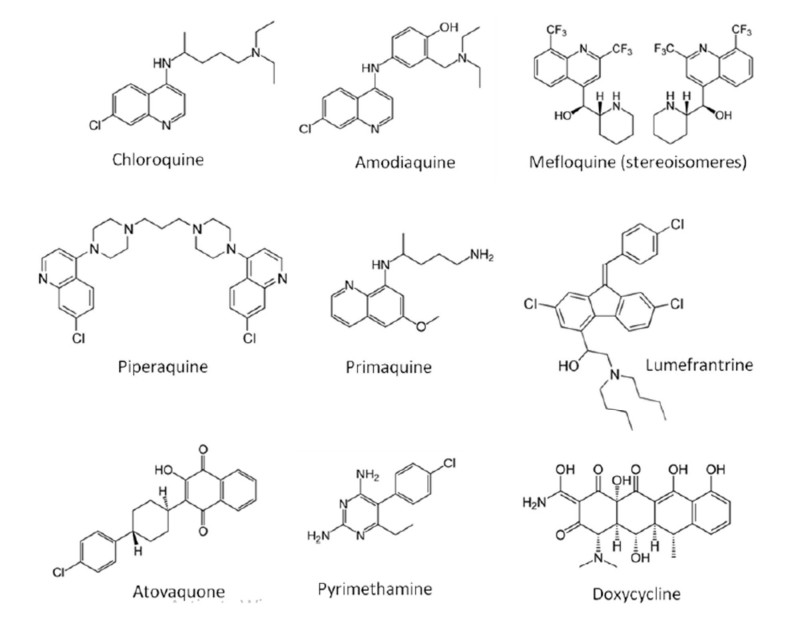









 DownLoad:
DownLoad:



